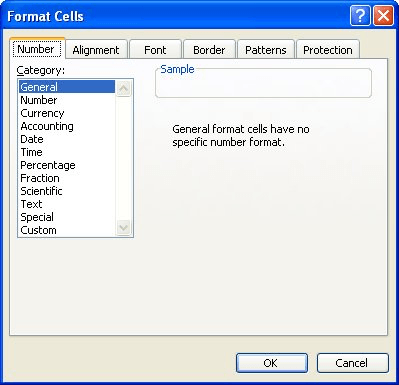Please Note: This article is written for users of the following Microsoft Excel versions: 97, 2000, 2002, and 2003. If you are using a later version (Excel 2007 or later), this tip may not work for you. For a version of this tip written specifically for later versions of Excel, click here: Sorting ZIP Codes.
Written by Allen Wyatt (last updated December 23, 2023)
This tip applies to Excel 97, 2000, 2002, and 2003
ZIP Codes come in two flavors: five-digit codes and nine-digit codes. If you type a column of ZIP Codes into Excel—some five-digits and some nine—you may wonder why they don't sort correctly.
The reason is that Excel recognizes the five-digit codes as numeric entries and the nine-digit codes as text entries. (It is the dash in the middle of the nine-digit codes that makes Excel treat the entry as text.) The problem with sorting the numbers is that Excel treats numeric and text values differently when sorting.
The solution (without resorting to formulas and additional columns for sorting) is to make sure that you force Excel to treat all your entries as text. You can do this by formatting a column as text before putting in your first ZIP Code. Simply follow these steps:

Figure 1. The Number tab of the Format Cells dialog box.
This formats the cells as text, and you can then sort the ZIP Codes correctly. Don't be misled here, however: You must make the format change before you enter values in the cells. If you format the cells as text after you enter information, they still won't sort properly. You can do the following, however:
Once this process is done, you can sort the cells, as desired.
ExcelTips is your source for cost-effective Microsoft Excel training. This tip (2793) applies to Microsoft Excel 97, 2000, 2002, and 2003. You can find a version of this tip for the ribbon interface of Excel (Excel 2007 and later) here: Sorting ZIP Codes.

Solve Real Business Problems Master business modeling and analysis techniques with Excel and transform data into bottom-line results. This hands-on, scenario-focused guide shows you how to use the latest Excel tools to integrate data from multiple tables. Check out Microsoft Excel Data Analysis and Business Modeling today!
Some symbols can be easily changed in Excel or in Windows, such as the symbols used for currency and to separate ...
Discover MoreIf you make too many formatting changes to your workbook, you could end up with a situation where you cannot make any ...
Discover MoreIf you have a range of numeric values in your worksheet, you may want to change them from numbers to text values. Here's ...
Discover MoreFREE SERVICE: Get tips like this every week in ExcelTips, a free productivity newsletter. Enter your address and click "Subscribe."
There are currently no comments for this tip. (Be the first to leave your comment—just use the simple form above!)
Got a version of Excel that uses the menu interface (Excel 97, Excel 2000, Excel 2002, or Excel 2003)? This site is for you! If you use a later version of Excel, visit our ExcelTips site focusing on the ribbon interface.
FREE SERVICE: Get tips like this every week in ExcelTips, a free productivity newsletter. Enter your address and click "Subscribe."
Copyright © 2025 Sharon Parq Associates, Inc.
Comments